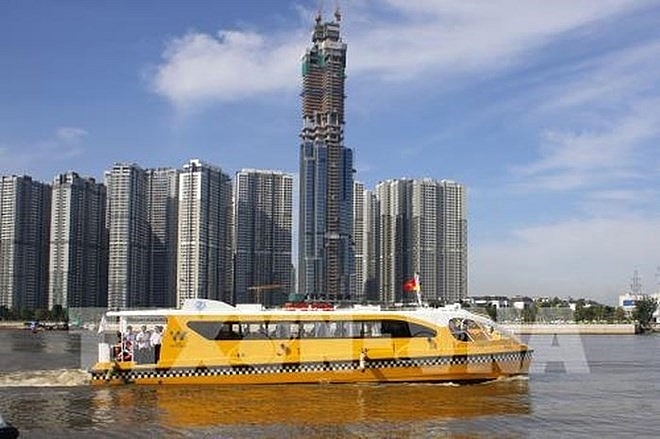HCM City advised to optimise potential of waterway tourism
 |
| Saigon waterbus in Ho Chi Minh City |
Currently, the city has over 1,000km of waterways. Of this, the city has building plans for 975km, including 175km for seven maritime routes, 203km for nine national routes, and 612km for 94 local routes.
With 320 ports – including the four big ones of Sai Gon, Tan Cang-Cat Lai, Ben Nghe, and Nha Be – the city has typical characteristics of a metropolis built with western architecture, with one-third of architectural heritage lying along rivers and canals, which is suitable for tourism development.
Thanks to its diverse natural resources, since 2013, the city has defined waterway tourism as one of its major products, drawing the investment of many travel firms and investors.
Notably, it has recently launched Saigon waterbus, while introducing seven new river tourism products.
Since 2016, the city has issued several key resolutions and documents highlighting the need to boost waterway tourism.
Under a waterway tourism development plan for the 2017-2020 period approved by the municipal People’s Committee, there will be at least seven tourism routes in 2020, situated in the Saigon, Dong Nai, Nha Be, Soai Rap, and Long Tau rivers, as well as other internal canals.
The number of tourists travelling by waterway in the 2017-2018 period reached about 450,000 per year and up 15 percent in following years.
However, the tourism potential of Ho Chi Minh City has yet to be fully exploited.
In 2011, the city had 37 enterprises with 130 vessels. However, now the figures have shrunk to only 19 enterprises with 100 vessels.
According to experts, despite the city’s orientations in boosting waterway tourism development, it has yet to make adequate investment into infrastructure for the sector. In particular, the closure of the Bach Dang port in District 1 and some other ports in District 4 has caused many difficulties for travel firms in loading and receiving tourists as well as docking their vessels, resulting in the quitting and switching of business operations.
Meanwhile, docking stations along waterway tourism routes have stayed modest in number and quality, as well as attraction, while water tourism products have remained few.
Many experts held that it is necessary to review the planning of riverside heritage for the restoration and repair in order to serve tourism.
Architect Truong Thai Hoai An, from the Ho Chi Minh City University of Architecture, asserted that the preservation of historical relic sites along rivers is not only the responsibility of the Government, but the whole society, and especially urban development advisors.
The investment in waterway tourism in line with the exploitation of the value of heritage is also part of solutions to protect heritage amidst strong urbanisation process.
What the stars mean:
★ Poor ★ ★ Promising ★★★ Good ★★★★ Very good ★★★★★ Exceptional
Related Contents
Latest News
More News
- The destinations powering Vietnam’s festive season travel demand (December 04, 2025 | 18:33)
- Vietnam named among the world’s most exciting winter destinations (December 04, 2025 | 15:10)
- Phu Tho emerges as northern Vietnam’s new tourism hub (December 01, 2025 | 17:00)
- Vietjet completes Airbus A320/A321 updates ahead of deadline (December 01, 2025 | 09:49)
- Vietjet resumes Con Dao flights from early December (November 28, 2025 | 15:24)
- Free tickets, Lunar New Year promotions on offer at Vietjet Mega Livestream (November 26, 2025 | 15:32)
- Scandinavian Airlines and Vietnam Airlines broaden agreement with new routes (November 25, 2025 | 17:04)
- Halong Cruise Port welcomes over 3,100 international visitors (November 12, 2025 | 18:06)
- Vietnam.travel climbs to second place in Southeast Asia website rankings (November 12, 2025 | 18:01)
- Cat Ba named among Southeast Asia’s top island adventures (November 11, 2025 | 18:09)

 Tag:
Tag:





















 Mobile Version
Mobile Version